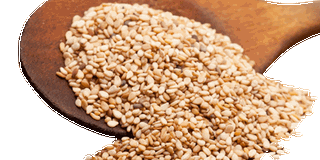Cash in on huge market for sim sim

Sim sim seeds. FILE PHOTO
The nutritional value in sesame commonly known as simsim, makes it one of the highly demanded commodities globally. High in oil content, the drought-resistant oil seed crop has great investment potential
If you invested in growing this crop, you will be assured of your return on investment since it does well in semi-arid regions such as West Nile, Lango, Teso and Acholi sub-regions.
You can capitalise on markets such as China which is considered the biggest global importer of sesame.
Uses
Rising application of the product as an anti-oxidant in various pharmaceutical formulations is expected to drive the market. Robust growth of the pharmaceutical industry in developing countries, including China and India can be attributed to supportive government policies for promoting investments in manufacturing sector. This is projected to open new avenues for the market in future.
Used in cosmetics that prolong youthfulness and beauty, sesame oil boasts of good skin nourishing properties.
In China, sesame seeds are used to flavour cakes, cookies, and popular desserts such as sesame seed balls and fried custard. You will also find it in savory dishes.
Sesame paste, which is made by crushing toasted sesame seeds, is an ingredient in noodle dishes that include a thick, nutty sauce.
But that’s not all. Sesame is a good source of several nutrients that are important for the immune system including zinc, selenium, copper, iron, vitamin B6, and vitamin E.
According to Dr Paul Kasenene, a functional lifestyle and nutritional expert, “Two very important food groups we should all eat more often are nuts and seeds.”
They contain lots of protein, calcium, important minerals and omega 3 fats. Eating one tea spoon of Simsim (Sesame) daily helps to boost your energy levels.”
Market
The global sesame seeds market size is expected to reach $17.77b (Shs65.7 trillion) by 2025. Growing popularity of sesame seeds as a functional ingredient in several foods on account of its ability to facilitate digestion and reduce hypertension is a key driving factor in the market.
Sesame seeds market in 2016 alone was 6,039 million tonnes and the market is likely to witness positive growth in the coming years. The product is mainly produced in the regions of southern Asia and Africa.
China and India together accounted for approximately 24.0 per cent of the global production. According to a report by Food and Agriculture Organisation (FAO), Tanzania is the largest producer of sesame seeds.
Ms Brenda Opus, an export marketing executive of Uganda Export Promotions Board –currently promoting and marketing Uganda’s exports, says, “China wants quantities but also quality. So Ugandan exporters need to ensure that they meet both sustainably.”
Know-how
Mr Andrew Wanyaka, the managing director Olives and Twigs, exports sesame and other seeds to China and India. The company which is currently exhibiting at the China-Beijing Horticultural Expo, has clicked a deal to supply at least 1,000 tonnes of sesame to a client in China.
Speaking to Prosper Magazine, Mr Wanyaka says: “We are working around the clock to deliver this order of 1,000 tonnes before December.”
Mr Wanyaka confirms that the market is big. Already, the company has leads to supply other orders in China and they are looking out to raise anywhere between 100,000 to 1 million tonnes to supply. Then they will export another 200,000 tonnes order from India.
However, “The problem is about the low production where farmers are limited on their ability to produce since it is a liquid investment which would require about Shs1.5b every two weeks to aggregate, pay the farmers and deliver the product to the respective markets,” Wanyaka explains.
Guideline to exporting
When exporting, identify and win the trust of buyers by operating a registered company with the Uganda Registration Services Bureau (URSB) with a Tax Identification Number (TIN).




